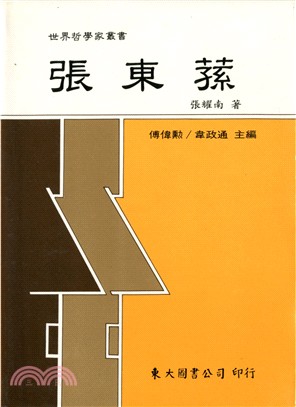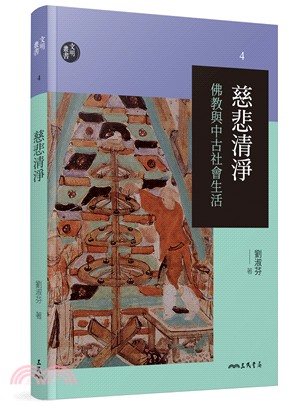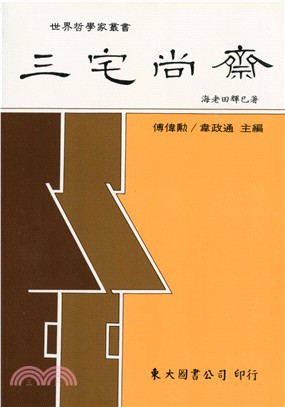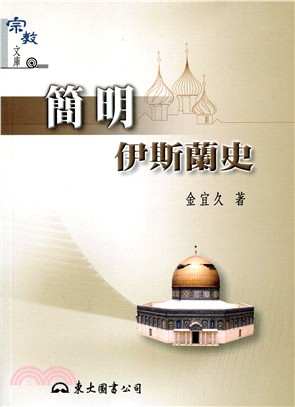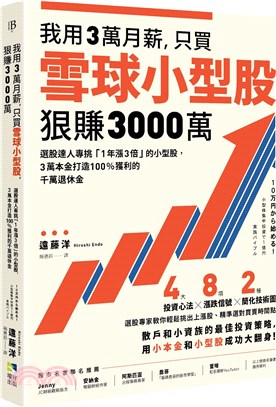相關商品
商品簡介
名人/編輯推薦
目次
書摘/試閱
商品簡介
《普通高等教育材料成型及控制工程系列規劃教材:焊接科學與工程專業英語》主要介紹焊接技術與工程專業的基礎知識和專業知識英語文獻。《普通高等教育材料成型及控制工程系列規劃教材:焊接科學與工程專業英語》內容大部分選自國外原版教材,教材共分九章,內容包括焊接技術與工程專業知識的諸多方面的英語文獻。內容涉及現代工程結構材料、金屬材料的力學性能及熱物理性能、鋼的熱處理、電弧物理等焊接技術基礎知識,以及弧焊電源、焊接方法及設備、焊接冶金學、焊接工藝、焊接應力與變形、焊接自動化及焊接質量檢驗等焊接專業知識。
《普通高等教育材料成型及控制工程系列規劃教材:焊接科學與工程專業英語》為高等院校焊接專業學生專用教材,也可以供從事焊接技術與工程領域工作的工程技術人員參考。
《普通高等教育材料成型及控制工程系列規劃教材:焊接科學與工程專業英語》為高等院校焊接專業學生專用教材,也可以供從事焊接技術與工程領域工作的工程技術人員參考。
名人/編輯推薦
《普通高等教育材料成型及控制工程系列規劃教材:焊接科學與工程專業英語》為高等院校焊接專業學生專用教材,也可以供從事焊接技術與工程領域工作的工程技術人員參考。
目次
Chapter1WeldingTechnologyFundamental
1.1ModernEngineeringStructuralMaterial
1.2MechanicalPropertyofMetalMaterial
1.3ThermophysicalPropertyofMetalMaterial
1.3.1SpecificHeat
1.3.2ThermalExpansion
1.3.3ThermalConductivity
1.3.4MeltingPointorMeltingRange
1.3.5ThermionicWorkFunction
1.4PrincipalTypesofHeatTreatmentofSteel
1.5ArcPhysics
1.5.1StabilityofElectricArc
1.5.2StabilityofACArc
Chapter2ArcWeldingPowerSource
2.1ClassificationofPowerSource
2.1.1ACPowerSupplies
2.1.2DCpowersupplies
2.1.3InverseSourceofArcWelding
2.2ElectricalCharacteristicsofPowerSource
2.2.1ConstantVoltage
2.2.2ConstantCurrent
2.2.3CombinedConstant?CurrentandConstantVoltageCharacteristics
2.3SelectingandSpecifyingaPowerSource
Chapter3ArcWeldingProcess
3.1ShieldedMetal?ArcWelding
3.2GasShielded?ArcWelding
3.2.1SpecificAdvantagesofGas?shieldedArc
3.2.2TypesofGas?ShieldedArcProcesses
3.2.3GasTungstenArc?Tig
3.2.4GasMetalArc?Mig
3.2.5CO2Welding
3.2.6PulsedArcWelding
3.3SubmergedArcWeldingFundamentalsoftheprocess
3.3.1Definitionandgeneraldescription
3.3.2Principlesofoperation
3.4PlasmaArcWelding
3.4.1KeyholeAction
3.4.2ArcShaping
3.4.3OperatingData
3.4.4Applications
3.4.5Summary
Chapter4OtherWeldingMethods
4.1ResistanceWelding
4.1.1Introduction
4.1.2ResistanceSpotWelding(RSW)
4.1.3ProjectionWelding
4.1.4ResistanceSeamWelding(RSEW)
4.1.5UpsetButtWelding
4.1.6FlashButtWelding
4.2FrictionStirWelding
4.2.1Introduction
4.2.2Principles
4.2.3FrictionStirTool
4.2.4FrictionStirringImperfections
4.3LaserBeamWelding
4.3.1Introduction
4.3.2Principles
4.3.3MetalsWelded
4.3.4Machines
4.3.5ParametersandTechnology
4.4ElectronBeamWelding
4.4.1Introduction
4.4.2Principles
4.4.3Variations
4.4.4Equipment
4.4.5Safety
Chapter5WeldingMetallurgy
5.1ChemicalReactionsinWelding
5.1.1Overview
5.1.2Gas?MetalReactions
5.1.3Slag?MetalReactions
5.2WeldMetalSolidification
5.2.1EpitaxialGrowthatFusionBoundary
5.2.2NonepitaxialGrowthatFusionBoundary
5.2.3CompetitiveGrowthinBulkFusionZone
5.2.4EffectofWeldingParametersonGrainStructure
5.2.5WeldMetalNucleationMechanisms
5.2.6GrainStructureControl
5.3TheMicrostructureandPropertiesofHeat?affectedZone
5.3.1WeldingThermalCycle
5.3.2TheMicrostructureChangesintheHAZ
5.3.3HardnessDistributionintheHAZ
5.3.4WeldingCracksintheHAZ
Chapter6WeldabilityofMaterial
6.1WeldabilityofMaterialandTestingMethod
6.1.1WeldabilityofMaterial
6.1.2WeldabilityEvaluationandTestMethod
6.2Weldabilityoflowcarbonsteel
6.2.1Metallurgyoftheliquidweldmetal
6.2.2Solidificationandsolidificationcracking
6.2.3Stressintensification,embrittlementandcrackingoffusionweldsbelowthesolidus
6.2.4Lamellartearing
6.2.5ReheatCracking
6.3WeldabilityofMagnesiumandItsAlloys
6.3.1AlloysandWeldingProcedures
6.3.2OxideFilmRemoval
6.3.3Cracking
6.3.4MechanicalProperties
6.3.5CorrosionResistanceandFireRisk
Chapter7ResidualStresses,DistortionandFatigue
7.1Residualstresses
7.1.1Developmentofresidualstresses
7.1.2AnalysisofResidualStresses
7.2Distortion
7.2.1Cause
7.2.2Remedies
7.3Fatigue
7.3.1Mechanism
7.3.2Fractography
7.3.3S?NCurves
7.3.4EffectofJointGeometry
7.3.5EffectofStressRaisers
7.3.6EffectofCorrosion
7.3.7Remedies
7.4CaseStudies
7.4.1FailureofaSteelPipeAssembly
7.4.2FailureofaBallMill
Chapter8AutomationofWelding
8.1IntroductionofAutomaticWeldingSystem
8.2FlexibleAutomationofWelding
8.3ARCWeldingRobots
8.3.1Introduction
8.3.2RobotManipulatorConfiguration
8.3.3RobotWeldingApplication
8.3.4BuyingaWeldingRobot
8.3.5RobotSafety
8.4ControlsforAutomaticArcWelding
8.4.1AutomaticWeldingControllers
8.4.2RobotControllers
8.4.3TeachingtheRobot
8.4.4RobotMemory
8.4.5WeldExecution
8.5SensorsandAdaptiveControl
8.5.1Introduction
8.5.2ContactSensors
8.5.3NoncontactSensorSystems
8.6ToolingandFixtures
Chapter9WeldingQualityInspection
9.1WeldingDefects
9.1.1DefinitionandTypes
9.1.2Cracks
9.1.3Porosity
9.1.4SolidInclusion
9.1.5LackofFusionandInadequateorincompletepenetration
9.1.6ImperfectShape
9.2Non?destructiveTesting
9.2.1RadiographicTesting
9.2.2UltrasonicTesting(UT)
9.2.3MagneticParticleInspection(MPI)
9.2.4LiquidPenetrantTesting(PT)
9.3DestructiveTest
9.3.1TensionTests
9.3.2BendTests
9.3.3CharpyTests
9.3.4HardnessTesting
9.4RadiographInterpretation
9.4.1GeneralWeldingDiscontinuities
9.4.2OtherDiscontinuities
References
1.1ModernEngineeringStructuralMaterial
1.2MechanicalPropertyofMetalMaterial
1.3ThermophysicalPropertyofMetalMaterial
1.3.1SpecificHeat
1.3.2ThermalExpansion
1.3.3ThermalConductivity
1.3.4MeltingPointorMeltingRange
1.3.5ThermionicWorkFunction
1.4PrincipalTypesofHeatTreatmentofSteel
1.5ArcPhysics
1.5.1StabilityofElectricArc
1.5.2StabilityofACArc
Chapter2ArcWeldingPowerSource
2.1ClassificationofPowerSource
2.1.1ACPowerSupplies
2.1.2DCpowersupplies
2.1.3InverseSourceofArcWelding
2.2ElectricalCharacteristicsofPowerSource
2.2.1ConstantVoltage
2.2.2ConstantCurrent
2.2.3CombinedConstant?CurrentandConstantVoltageCharacteristics
2.3SelectingandSpecifyingaPowerSource
Chapter3ArcWeldingProcess
3.1ShieldedMetal?ArcWelding
3.2GasShielded?ArcWelding
3.2.1SpecificAdvantagesofGas?shieldedArc
3.2.2TypesofGas?ShieldedArcProcesses
3.2.3GasTungstenArc?Tig
3.2.4GasMetalArc?Mig
3.2.5CO2Welding
3.2.6PulsedArcWelding
3.3SubmergedArcWeldingFundamentalsoftheprocess
3.3.1Definitionandgeneraldescription
3.3.2Principlesofoperation
3.4PlasmaArcWelding
3.4.1KeyholeAction
3.4.2ArcShaping
3.4.3OperatingData
3.4.4Applications
3.4.5Summary
Chapter4OtherWeldingMethods
4.1ResistanceWelding
4.1.1Introduction
4.1.2ResistanceSpotWelding(RSW)
4.1.3ProjectionWelding
4.1.4ResistanceSeamWelding(RSEW)
4.1.5UpsetButtWelding
4.1.6FlashButtWelding
4.2FrictionStirWelding
4.2.1Introduction
4.2.2Principles
4.2.3FrictionStirTool
4.2.4FrictionStirringImperfections
4.3LaserBeamWelding
4.3.1Introduction
4.3.2Principles
4.3.3MetalsWelded
4.3.4Machines
4.3.5ParametersandTechnology
4.4ElectronBeamWelding
4.4.1Introduction
4.4.2Principles
4.4.3Variations
4.4.4Equipment
4.4.5Safety
Chapter5WeldingMetallurgy
5.1ChemicalReactionsinWelding
5.1.1Overview
5.1.2Gas?MetalReactions
5.1.3Slag?MetalReactions
5.2WeldMetalSolidification
5.2.1EpitaxialGrowthatFusionBoundary
5.2.2NonepitaxialGrowthatFusionBoundary
5.2.3CompetitiveGrowthinBulkFusionZone
5.2.4EffectofWeldingParametersonGrainStructure
5.2.5WeldMetalNucleationMechanisms
5.2.6GrainStructureControl
5.3TheMicrostructureandPropertiesofHeat?affectedZone
5.3.1WeldingThermalCycle
5.3.2TheMicrostructureChangesintheHAZ
5.3.3HardnessDistributionintheHAZ
5.3.4WeldingCracksintheHAZ
Chapter6WeldabilityofMaterial
6.1WeldabilityofMaterialandTestingMethod
6.1.1WeldabilityofMaterial
6.1.2WeldabilityEvaluationandTestMethod
6.2Weldabilityoflowcarbonsteel
6.2.1Metallurgyoftheliquidweldmetal
6.2.2Solidificationandsolidificationcracking
6.2.3Stressintensification,embrittlementandcrackingoffusionweldsbelowthesolidus
6.2.4Lamellartearing
6.2.5ReheatCracking
6.3WeldabilityofMagnesiumandItsAlloys
6.3.1AlloysandWeldingProcedures
6.3.2OxideFilmRemoval
6.3.3Cracking
6.3.4MechanicalProperties
6.3.5CorrosionResistanceandFireRisk
Chapter7ResidualStresses,DistortionandFatigue
7.1Residualstresses
7.1.1Developmentofresidualstresses
7.1.2AnalysisofResidualStresses
7.2Distortion
7.2.1Cause
7.2.2Remedies
7.3Fatigue
7.3.1Mechanism
7.3.2Fractography
7.3.3S?NCurves
7.3.4EffectofJointGeometry
7.3.5EffectofStressRaisers
7.3.6EffectofCorrosion
7.3.7Remedies
7.4CaseStudies
7.4.1FailureofaSteelPipeAssembly
7.4.2FailureofaBallMill
Chapter8AutomationofWelding
8.1IntroductionofAutomaticWeldingSystem
8.2FlexibleAutomationofWelding
8.3ARCWeldingRobots
8.3.1Introduction
8.3.2RobotManipulatorConfiguration
8.3.3RobotWeldingApplication
8.3.4BuyingaWeldingRobot
8.3.5RobotSafety
8.4ControlsforAutomaticArcWelding
8.4.1AutomaticWeldingControllers
8.4.2RobotControllers
8.4.3TeachingtheRobot
8.4.4RobotMemory
8.4.5WeldExecution
8.5SensorsandAdaptiveControl
8.5.1Introduction
8.5.2ContactSensors
8.5.3NoncontactSensorSystems
8.6ToolingandFixtures
Chapter9WeldingQualityInspection
9.1WeldingDefects
9.1.1DefinitionandTypes
9.1.2Cracks
9.1.3Porosity
9.1.4SolidInclusion
9.1.5LackofFusionandInadequateorincompletepenetration
9.1.6ImperfectShape
9.2Non?destructiveTesting
9.2.1RadiographicTesting
9.2.2UltrasonicTesting(UT)
9.2.3MagneticParticleInspection(MPI)
9.2.4LiquidPenetrantTesting(PT)
9.3DestructiveTest
9.3.1TensionTests
9.3.2BendTests
9.3.3CharpyTests
9.3.4HardnessTesting
9.4RadiographInterpretation
9.4.1GeneralWeldingDiscontinuities
9.4.2OtherDiscontinuities
References
書摘/試閱
The output current of a transformer power supply is controlled by changing the magnetic coupling between the primary and secondary coil or by adjusting the inductance of the circuit.The output of a transformer may be directly applied for proper welding conditions. However, generally an impedance is inserted in series with the transformer and the work load.The electrical characteristics for welding are adjusted by the impedance.
There are several transformer designs to provide desired output volt-ampere characteristics for an arc welding condition, including tapped secondary coil control. movable-coil control. movableshunt control. movable-core reactor, saturable reactor control. These designs are briefly described as follows.
(1) Tapped secondary coil control
The configuration of the tapped secondary coil transformer can be represented by Figure 2.1.In this type of transformer, a set of taps are installed in the secondary winding coil. By choosing different tapes, the number of turns in the secondary winding can be changed, which will directly adjust the output volt-current characteristics for a proper welding condition.Reducing the secondary turns decreases the open circuit voltage and increases welding current.Tapped secondary coil transforms are cheap and the most widely used welding power supplies.
(2) Movable-Coil Control
In a movable-coil transform, both primary and secondary coils are located on an elongated metal core.On the core,one of the coils is fixed,while the other coilis movable.For most cases,the position of secondary coilis fixed.The primary coil is normally attached on a movable component, therefore, the coil can be adjusted to move closer or farther away from the secondary coil.
Changing the distance between the primary and secondary coil adjusts the inductive coupling between the two coils. When the two coils are farther apart, the output voltage-current curve becomes more vertical, resulting a smaller maximum short-circuit current value. Conversely, when the coils are closer, a larger maximum short-circuit current and a flatter voltage-current curve are obtained.
主題書展
更多
主題書展
更多書展本週66折
您曾經瀏覽過的商品
購物須知
大陸出版品因裝訂品質及貨運條件與台灣出版品落差甚大,除封面破損、內頁脫落等較嚴重的狀態,其餘商品將正常出貨。
特別提醒:部分書籍附贈之內容(如音頻mp3或影片dvd等)已無實體光碟提供,需以QR CODE 連結至當地網站註冊“並通過驗證程序”,方可下載使用。
無現貨庫存之簡體書,將向海外調貨:
海外有庫存之書籍,等候約45個工作天;
海外無庫存之書籍,平均作業時間約60個工作天,然不保證確定可調到貨,尚請見諒。
為了保護您的權益,「三民網路書店」提供會員七日商品鑑賞期(收到商品為起始日)。
若要辦理退貨,請在商品鑑賞期內寄回,且商品必須是全新狀態與完整包裝(商品、附件、發票、隨貨贈品等)否則恕不接受退貨。















